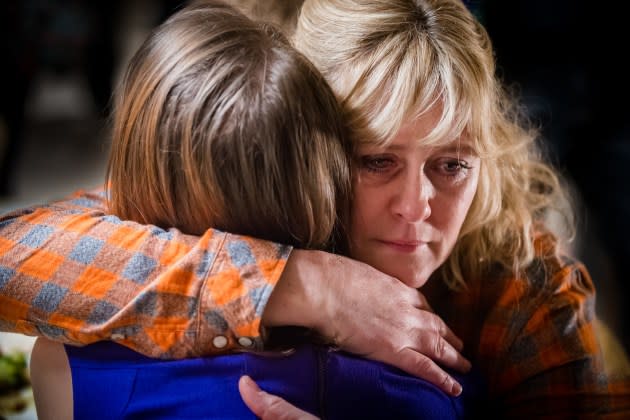Number Of Female Writers & Directors On British TV Shows Fell Between 2016 & 2022, Diamond Report Reveals

Contributions by women writers and directors to British TV have gone in the wrong direction over the past six years, according to an alarming report from the broadcaster-backed Diamond project.
Between 2016 and 2022, female British scribes saw their contributions to UK TV shows tumble by more than 10 percentage points to below one-third, while director contributions fell from 26.9% to 25.3%.
More from Deadline
Dolly Parton Plays NFL Halftime Show As A Dallas Cowboys Cheerleader, Sings Iconic Hits
Stefon Movie Based On Bill Hader's 'SNL' Character Was Discussed, Seth Meyers Says
The disappointing new research comes after Diamond trawled through six years worth of diversity data. In 2020/21 in particular, the body found a “significant drop” in the proportion of female writers working in the industry, which it put down to the disproportionate impact of the Covid-19 pandemic, particularly on those higher up the chain.
Female writers, directors and producer-directors were also much less likely than their male counterparts to be employed on peak-time programs. There was particularly bad representation for female writers in comedy (30.2%), while female directors fared badly in children’s (26.2%) and entertainment (21.2%). Women writers were better represented in drama, with contributions at 54.4%, which Diamond said is “in part due to them being more likely to be working on long-running dramas.” Celebrated British scribes include Happy Valley’s Sally Wainwright and I Hate Suzie co-creator Lucy Prebble.
Diamond uses a ‘contributions’ measure to account for the fact that many shows have multiple writers or directors. While one in three of all directors (33.3%) identified as female, the proportion of director contributions was much lower, suggesting that they are under-utilized even when employed. This was the case for all British broadcasters, Diamond said. For instance Paramount, which owns Channel 5, had 47.5% female writers in 2021/21 but just 22.4% contributions.
“Independent inquiry”
Urging a “complete reset,” Ellie Peers, General Secretary of the Writers Guild of Great Britain (WGGB), called for an “independent inquiry to investigate systemic issues of racism, sexism, ableism and all forms of discrimination that exist within the industry.”
“This report has made clear what we have long suspected, that multiple schemes and initiatives are failing to create real systemic change in the industry,” she added.
“It has been over five years since we released Equality Writes, showing that women writers faced a glass ceiling with no progress being made to increase their representation. This report now shows that for women writers the situation is getting worse, not better and for other underrepresented groups progress is far too slow.”
The WGGB and Directors UK had initially asked Diamond to produce the report. Directors UK CEO Andy Harrower said broadcasters need “clearer commissioning targets, a willingness to hire under-represented talent and a structure that supports career progression.”
Small gains
When examining ethnicity, Diamond found that the overall number of Black, Asian and Minority Ethnic directors and writers rose by one-third over the six-year period to 14% and contributions rose by a smaller sum, from 6.1% to 8.7%.
The proportion of Black, Asian, and Minority Ethnic writers on UK shows hit a high of 15.6% in 2020/21 but fell the following year, “possibly as a result of broadcasters’ efforts to respond to the Black Lives Matter movement,” according to Diamond.
More convincingly, contributions from LGBTQ+ writers soared over the period from 8.9% to 31.6%, with gay men particularly well represented.
Deborah Williams, who runs the Creative Diversity Network, which oversees Diamond, said initiatives aimed at diversifying writers and directors had “failed to achieve the intended impact.”
“It is very disheartening to see the number of women in these roles actually decrease over this period, and other groups are not being given opportunities to make shows at the bigger-budget, peak time end of the scale,” she added.
Best of Deadline
2023 Premiere Dates For New & Returning Series On Broadcast, Cable & Streaming
2023-24 Awards Season Calendar - Dates For Oscars, Emmys, Grammys, Tonys, Guilds & More
Da'Vine Joy Randolph To Receive Palm Springs Film Festival's Breakthrough Performance Award
Sign up for Deadline's Newsletter. For the latest news, follow us on Facebook, Twitter, and Instagram.

